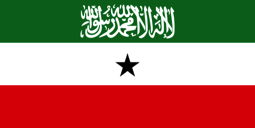
Somaliland
Since Somaliland’s unilateral declaration of independence in 1991, the country has made significant progress in establishing a locally driven system that combines elements of customary, clan-based decision-making with electoral representation. In the years since the end of widespread conflict in 1997, a series of popular votes have taken place, starting with a constitutional referendum in 2001, which was widely seen within the country as an endorsement of the restoration of Somaliland sovereignty. That was followed by full elections in 2002 (local councils), 2003 (presidential), 2005 (parliamentary), 2010 (presidential) and 2012 (local councils).
However, Somaliland’s electoral process has seen its share of difficulties. Election dates have frequently been delayed, with extensions to parliamentary and presidential terms causing particular controversy. At the time of this report, both the President and the House of Representatives have exceeded their terms, with the lower House of Parliament now more than six years beyond the five-year constitutional term that followed the 2005 election. Simultaneous elections for MPs and the President were planned for 2015, but the polls were shifted to 2016 and then March 2017, before being postponed again as outlined below.
One of the challenges that has repeatedly surfaced in negotiations over election dates has been that of establishing a reliable voter register. The issue almost derailed the 2005 House of Representatives election, and an attempt in 2008–10 to register voters was extremely controversial. While the resultant register was used in the 2010 presidential election with some success, the register itself was by then so tainted by errors and problems that it was abandoned not long afterwards.
As with the 2008–10 registration, Somaliland’s electoral stakeholders were committed to using biometric technology to ensure the integrity of the voter list. In preparation for the 2016 registration, considerable planning was undertaken to try to prevent the problems with data acquisition and cleaning that had undermined the integrity of the previous voter register.1 The NEC, in conjunction with Interpeace and foreign donors, engaged in a process of reflection and review. Amongst other exercises, this involved commissioning a report2 by the consultancy Creative Associates on voter registration design, including the possibility that voter registration might be integrated with a parallel process of civil registration. The final decision to pursue electronic voter registration using iris-scanning technology was taken to enable more precise biometric matching and help to eliminate the possibility of multiple registrations and unintentional duplications.
Prior to publication of the RFP, the NEC embarked on a technical pilot study to test the feasibility of using iris recognition for voter registration. The NEC conducted two field tests in Hargeysa, the capital city, and Baki, a rural area in Awdal, during June 2014. A total of 1,062 registrations were made at the two sites, with 200 registrants chosen to repeat the process in order to check the effectiveness of the system in catching duplicate entries. The full set of registration data was then sent to a team of iris-recognition experts at the University of Notre Dame (USA), who used algorithms to identify the false and duplicate records. The Notre Dame group reported a 100 per cent success rate in the identification of ineligible entries.
The implementation of the registration differed from the RFP specification3 based on the June 2014 field study in a number of key respects. The field study4 had determined that internet connectivity was too unreliable to permit on-line processing to the NEC’s central server. Updating the central server was planned to happen when the registration servers were returned to the regional centers where reliable connection are available.
The timing of the registration was planned according to the population sizes recorded from the 2010 and 2012 elections, and the registration teams were to be recruited and trained at the before registration commenced, and would move from region to region, using lessons learned from each region to improve registration in the next.
In January 2014, a new set of commissioners were appointed. The new commission determined to adopt an online processing platform, and changed to registration timing to give equal time to each region, ignoring the varied population sizes, thus multiplying the logistical complexity of the operations.
In another change, the commissioners decided that new registration officials should be recruited in each region, requiring that training be undertaken between each regional registration.
To prevent multiple registration using iris recognition requires that both iris images are captured simultaneously. The RFP included an override system using SMS communication to allow the registration of people with only a single eye. The provider failed to deliver the SMS system, creating issues for a few registrants.
These divergences from the original specification were the source of the majority of the technical5 issues experienced during registration.
Between January and March 2016, registration was completed in three of Somaliland’s six regions: Togdheer, Awdal and Saaxil. At that stage, severe drought forced a month-long suspension, with the process resuming in Maroodi Jeex at the end of April. Registration was then suspended for the month of Ramadan before the process was resumed in Sanaag in July, concluding in Sool. Registration was finally completed in September 2016.
The RFP specification did not include issuing voter registration cards at registration, to avoid the possibility of voters registering at different registration centers before the data had been transmitted for deduplication at the NEC. Voters were to be notified where to collect of their registration cards via the SMS system.
The new election commission did to reintroduce issuing of the voter registration cards at registration when they decided to adopt online deduplication, and did not adopt use of the SMS system to notify voters of when and where to collect the printed registration cards. This created confusion6 for voters, and exacerbated the challenges of delivering the cards to voters.
1 http://nws-sa.com/Somaliland/Somaliland_NEC_Final_Report_on_the_Preparation_of_the_Voter_Register.pdf
2 http://nws-sa.com/Somaliland/Creative_Associates_Somaliland_Voter_Registration_Option_Analysis_Final_Report.pdf
3 http://nws-sa.com/Somaliland/rfp/SOMALILAND_NEC_2014-01_full_dossier_FINAL_140804.zip
4 http://nws-sa.com/Somaliland/20140716_Field_Study_report.pdf
5 http://www.progressio.org.uk/sites/progressio.org.uk/files/progressio_voter_registration_process_in_somaliland_final_170317.pdf
6 http://www.progressio.org.uk/sites/progressio.org.uk/files/progressio_voter_registration_process_in_somaliland_final_170317.pdf